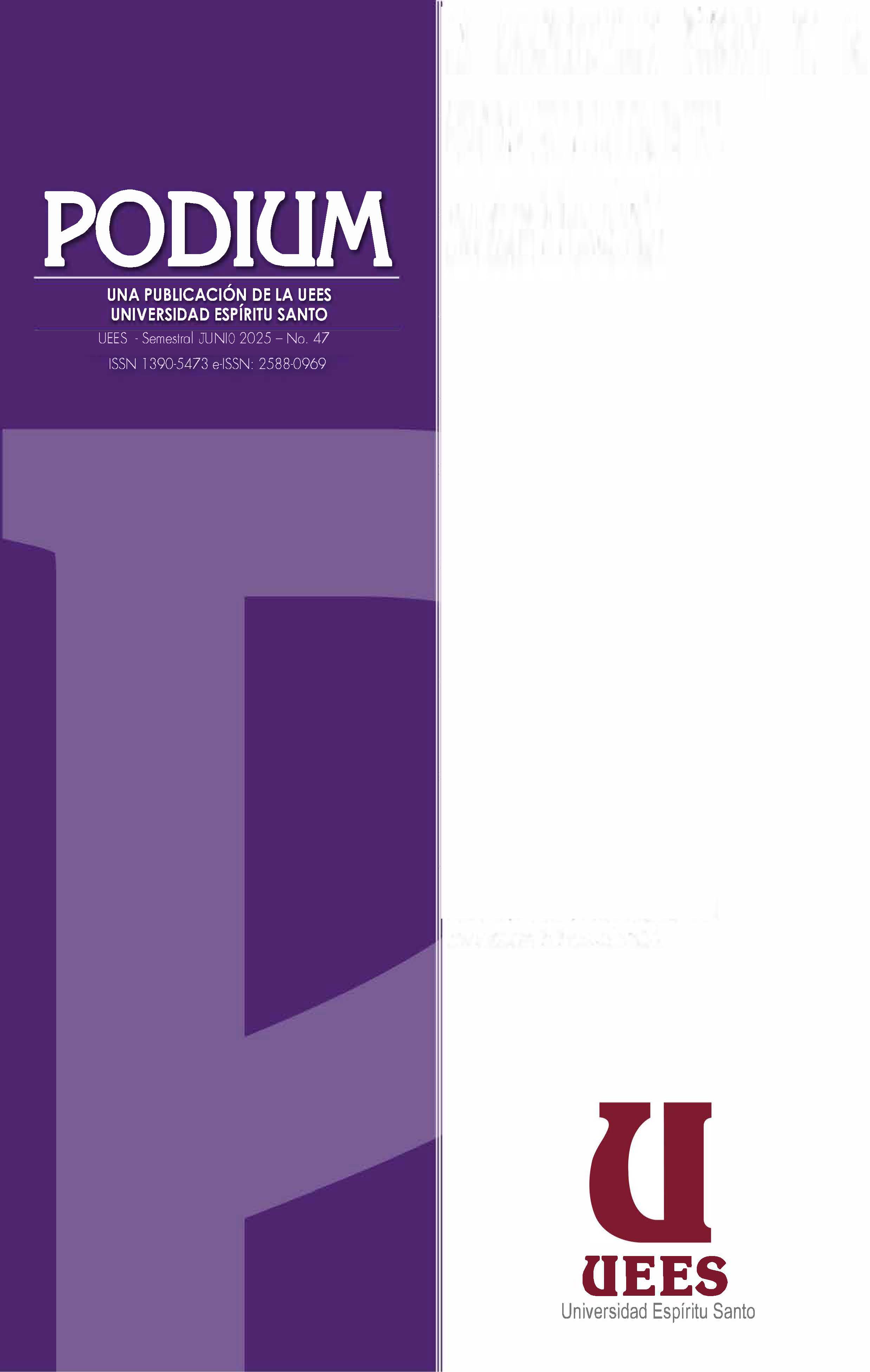Use of AI in Document Management for Implementing Organizational Agility "Organizational Agility Strategies: Application of Generative Artificial Intelligence in Document Management"
Main Article Content
Abstract
The aim of this study is to enhance organizational agility through an Intelligent Document Management System (IDMS). A methodology was implemented that includes the collection and segmentation of documents to create a vector database using Generative Artificial Intelligence (GAI) and advanced language models. The results show significant improvements in efficiency and productivity, demonstrating that GAI can optimize decision-making by centralizing dispersed information and facilitating advanced semantic searches. The conclusions highlight that regulating variables, such as temperature in content generation, helps mitigate the risk of hallucinations in AI models, ensuring more accurate responses. Additionally, the case of the National Meteorological System (NMS) illustrates the applicability of this solution in accessing critical information, promoting a culture of innovation and adaptability in a constantly evolving business environment.
Downloads
Article Details

This work is licensed under a Creative Commons Attribution-NonCommercial 4.0 International License.
When an article is approved, the author or authors keep the rights or authorship and cede to PODIUM the right to be the first able to edit it, reproduce it, exhibit it and communicate it by printed or electronica media.
In order to reinforce our open access policy, PODIUM journal is published under a license named “Creative Commons Attribution-NonCommercial 4.0 International (CC-BY-NC 4.0)”. This license allows sharing (copying and redistributing the material in any means or format) and adapting (re-mixing, transforming, and creating starting from the material). Corresponding credits must be given and no commercial use of the materials is allowed.
Partial or complete reproduction of articles published in PODIUM is authorized, as long as the author is appropriately cited as the source and the reproduction has no commercial purposes.
References
Adkis, L. (2010). Coaching Agile Teams: A CompanionforScrumMasters, Agile Coaches, and Project Managers in Transition. Addison Wesley Professional.
Aljawarneh, N. M. (2024). Themediating role of organizationagilitybetweenbusinessintelligence&innovative performance. Journal of StatisticsApplications&Probability, 13(3), 929. https://doi.org/10.18576/jsap/130307
Alkaabi, S. M. Y. O., Sohaimi, N. S. B., &Yatiban, A. B. (2024). Theeffect of technologicalinnovation and knowledgemanagementprocessonorganizationalagility: A systematicliteraturereview. Engineering, Technology&AppliedScienceResearch, 14(4), 15121-15126. https://doi.org/10.48084/etasr.7691
Anderson, D. J. (2010). Kanban: SuccessfulEvolutionaryChangeforYourTechnology Business. Pragmatic Bookshelf.
Bogdanova, M., Parashkekova, E., &Stoyanova, M. (2020, April). Agile Project Management in GovernmentalOrganizations. MethodologicalIssues. International E-Journal of Advances in Social Sciences, VI(16).
Brown, T. B., Mann, B., Ryder, N., Subbiah, M., Kaplan, J., Dhariwal, P., ... &Amodei, D. (2020). LanguageModels Are Few-ShotLearners. arXivpreprint arXiv:2005.14165.
Campbell, A. (2020). Agile. Essentials of Team and Project Management. Manifestofor Agile Software Development. EPUB. Publicación Independiente.
Cohn, M. (2005). Agile Estimating and Planning. Prentice Hall.
Conforto, E. C., Salum, F., Amaral, D. C., Da Silva, S. L., & de Almeida, L. M. (2014, Julio). Can Agile Project Management Be Adoptedby Industries OtherThan Software Development? Project Management Institute, 45(3).
Connolly, T. M., &Begg, C. E. (2015). DatabaseSystems: A PracticalApproach to Design, Implementation, and Management. Pearson.
Denning, S. (2018). TheAge of Agile: How Smart Companies Are TransformingtheWayWorkGets Done. AMACOM.
Devlin, J., Chang, M. W., Lee, K., &Toutanova, K. (2018). BERT: Pre-training of Deep Bidirectional Transformers forLanguageUnderstanding. arXivpreprint arXiv:1810.04805.
Felipe, C. M., Roldán, J. L., & Leal-Rodríguez, A. L. (2024). Impact of organizational culture valuesonorganizationalagility.Sustainability, 16(3), 2354. https://doi.org/10.3390/su9122354:contentReference[oaicite:0]{index=0}
Gao, Q., Sun, Y., Guo, J., &Zhou, J. (2021). A SurveyonGenerative Pre-TrainedTransformer 3. arXivpreprint arXiv:2108.00118.
Karim Zadeh, E., Khoulenjani, A. B., &Safaei, M. (2024). Integrating AI for agile projectmanagement: Innovations, challenges, and benefits. Journal of Artificial IntelligenceResearch.
Kumar, B. R., Madhuri, A., &Bathina, S. (2024). The role of artificial intelligence in decision-makingprocesses. AfricanJournal of BiologicalSciences, 6(6), 6344-6362. https://doi.org/10.33472/AFJBS.6.6.2024.6344-6362
Larman, C., &Vodde, B. (2016). Large-ScaleScrum: More withLeSS. Addison-Wesley Professional.
Lan, Z., Chen, M., Goodman, S., Gimpel, K., Sharma, P., &Soricut, R. (2019). Albert: A Lite BERT forSelf-SupervisedLearning of LanguageRepresentations. arXivpreprint arXiv:1909.11942.
Lewis, M., Liu, Y., Goyal, N., Ghazvininejad, M., Mohamed, A., Levy, O., ... &Zettlemoyer, L. (2019). BART: DenoisingSequence-to-Sequence Pre-Training for Natural LanguageGeneration, Translation, and Comprehension. arXivpreprint arXiv:1910.13461.
Liu, Y., Ott, M., Goyal, N., Du, J., Joshi, M., Chen, D., ... &Stoyanov, V. (2019). Roberta: A RobustlyOptimized BERT PretrainingApproach. arXivpreprint arXiv:1907.11692.
Manning, C., &Schütze, H. (1999). Foundations of Statistical Natural LanguageProcessing. MIT Press.
Ng, A. (2018). Buildingan AI-PoweredOrganization. Harvard Business Review.
Orkodi, S. (2024). Theeffectiveness of agile leadership in practice: A comprehensive meta-analysis of empiricalstudiesonorganizationaloutcomes. Journal of Entrepreneurship, Management and Innovation, 20(2), 117-138. https://doi.org/10.7341/20242026
Peters, M. E., Neumann, M., Iyyer, M., Gardner, M., Clark, C., Lee, K., ... &Zettlemoyer, L. (2018). Deep Contextualized Word Representations. arXivpreprint arXiv:1802.05365.
Radford, A., Narasimhan, K., Salimans, T., &Sutskever, I. (2018). ImprovingLanguageUnderstandingbyGenerativePretraining. arXivpreprint arXiv:1701.00160.
Radford, A., Wu, J., Child, R., Luan, D., Amodei, D., &Sutskever, I. (2019). LanguageModels Are Unsupervised Multitask Learners. OpenAI Blog, 1(8), 9.
Reimers, N., &Gurevych, I. (2019). Sentence-BERT: SentenceEmbeddingsUsingSiamese BERT-Networks. arXivpreprint arXiv:1908.10084.
Ries, E. (2011). The Lean Startup: HowToday'sEntrepreneurs Use ContinuousInnovation to CreateRadicallySuccessfulBusinesses. Crown Business.
Sculley, D., Holt, G., Golovin, D., Davydov, E., Phillips, T., Ebner, D., ... &Chaudhary, V. (2015). HiddenTechnicalDebt in Machine LearningSystems. Advances in Neural InformationProcessingSystems, 28.
Schick, T., &Schütze, H. (2020). ExploitingClozeQuestionsforFew-Shot Text Classification and Natural LanguageInference. arXivpreprint arXiv:2001.07676.
Shoeybi, M., Patwary, M., Puri, R., LeGresley, P., Casper, J., & Catanzaro, B. (2019). Megatron-LM: Training Multi-BillionParameterLanguageModelsUsing GPU ModelParallelism. arXivpreprint arXiv:1909.08053.
Sinek, S. (2014). LeadersEatLast: WhySomeTeamsPullTogether and OthersDon't. Portfolio.
StateGovernment of Victoria and Demos. (2008). Towards Agile Government. Analysis and PolicyObservatory.
Stei, G., Rossmann, A., &Szász, L. (2024). Leveragingorganizationalknowledge to developagility and improve performance: The role of ambidexterity. International Journal of Operations&Production Management, 44(8), 1446-1466. https://doi.org/10.1108/IJOPM-04-2023-0274:contentReference[oaicite:1]{index=1}
Torrecilla Salinas, C. J., Sedeño Lopez, J., Escalona Cuaresma, M., & Mejías Risoto, M. (2013). Agile in PublicAdministration: OxymoronorReality? A Survey of Agile MethodologyUsage in SpanishPublicAdministration.
Zarbo, P., &Gonzalez, D. L. (2021). Agilidad organizacional. Primera edición. Asesoría Literaria SD.





